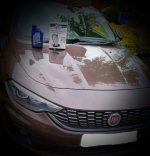Hi, I recently flushed & bleed brakes on my '67 Tipo t-jet as this job is scheduled to carry out every two years or so.
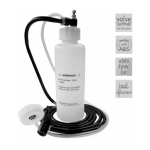
For this purpose I used Auto Jack 500ml one-man easy bleeder kit pressured from car spare wheel aiming to save money and time.
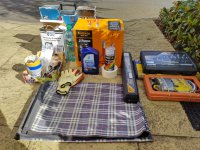
Things and tools ready to carry out the job. I also de-rusted brake discs and painted them.
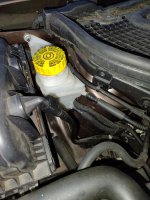
With the engine off press the brake pedal few times to release possible air trapped in the system. Using a syringe start emptying brake reservoir. In this case pipes run from its side so l took out only 1/4 of the old fluid, leaving outlets submerged, to not risk any air entering pipes. It would be difficult and time-consuming task to fix that.
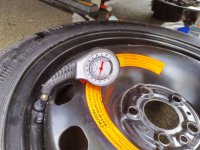
Adjust spare wheel pressure to little bit above recommend 20 psi as the air pressure drops quickly when bleeding.
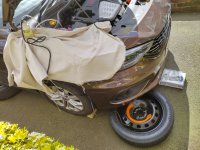
Setting up the kit correctly takes lots of preparation. It's advised pressure test the bottle with no fluid to check for leaks, then top up the pressure bottle and brake reservoir with new brake fluid (I used Petronas Tutela top 4/s dot4 cca 1.2 lit. in sum). Connect the air line to the tyre and slowly open the regulator situated on pressure bottle.
Few days earlier I sprayed WD-40 on brake nipples to get them loose easily.
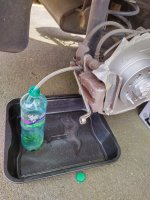
Starting with the caliper furthest away from ABS module, spread a little bit of silicon grease onto bleeding nipples, it helps to attach bleed tube on easier and place the other end into a container. Using a 12mm ring spanner (different nipples size rear/front) open the nipple and start the operation. When a clear brake fluid emerges close the nipple carefully, don't over tight it.
Repeat this procedure for the remaining calipers in the following order.(1.o/s rear, 2.n/s rear, 3.o/s front, 4.n/s front)
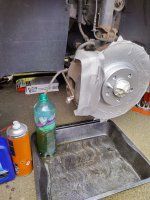
8mm ring spanner and smaller tubing (supplied with the kit) required for bleeding front nipples.
Bleeding takes cca 15-18 min each caliper as the brake fluid runs slowly out (particularly rears).
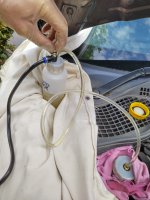
After every caliper, the spare tyre pressure must be checked/re-pumped and the pressure bottle refilled.
At the end go for a test drive and don't forget to pump up your spare wheel tyre to the correct pressure.
Overall this method took me well a half-of-day and didn't meet my initial time-saving expectations. Next time I'll be considering some other brake bleeding options.

For this purpose I used Auto Jack 500ml one-man easy bleeder kit pressured from car spare wheel aiming to save money and time.

Things and tools ready to carry out the job. I also de-rusted brake discs and painted them.

With the engine off press the brake pedal few times to release possible air trapped in the system. Using a syringe start emptying brake reservoir. In this case pipes run from its side so l took out only 1/4 of the old fluid, leaving outlets submerged, to not risk any air entering pipes. It would be difficult and time-consuming task to fix that.

Adjust spare wheel pressure to little bit above recommend 20 psi as the air pressure drops quickly when bleeding.

Setting up the kit correctly takes lots of preparation. It's advised pressure test the bottle with no fluid to check for leaks, then top up the pressure bottle and brake reservoir with new brake fluid (I used Petronas Tutela top 4/s dot4 cca 1.2 lit. in sum). Connect the air line to the tyre and slowly open the regulator situated on pressure bottle.
Few days earlier I sprayed WD-40 on brake nipples to get them loose easily.

Starting with the caliper furthest away from ABS module, spread a little bit of silicon grease onto bleeding nipples, it helps to attach bleed tube on easier and place the other end into a container. Using a 12mm ring spanner (different nipples size rear/front) open the nipple and start the operation. When a clear brake fluid emerges close the nipple carefully, don't over tight it.
Repeat this procedure for the remaining calipers in the following order.(1.o/s rear, 2.n/s rear, 3.o/s front, 4.n/s front)

8mm ring spanner and smaller tubing (supplied with the kit) required for bleeding front nipples.
Bleeding takes cca 15-18 min each caliper as the brake fluid runs slowly out (particularly rears).

After every caliper, the spare tyre pressure must be checked/re-pumped and the pressure bottle refilled.
At the end go for a test drive and don't forget to pump up your spare wheel tyre to the correct pressure.
Overall this method took me well a half-of-day and didn't meet my initial time-saving expectations. Next time I'll be considering some other brake bleeding options.


